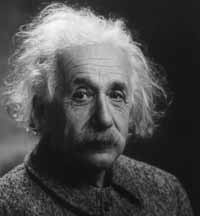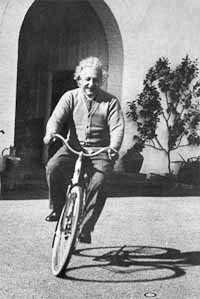

Einstein
Einstein's general theory of relativity is a theory of gravitation that equates the geometrical properties of space and time to mass and energy. When masses and velocities are small its mathematical predictions correspond to those made by Newton. Where Einstein's predictions differ from those of Newton and classical physics for large masses and higher velocities, they are confirmed by observation and experiment. As the simplest mathematical theory consistent with Nature, general relativity is widely accepted and is the theoretical basis of Big Bang cosmology and the evolution of our Universe.Einstein was bothered deeply by the questions of how to associate his mathematical concepts with physical measurements, a dilemma ubiquitous in the plane geometry of Euclid, the theories of Newton, and mathematical modeling in general. Einstein pondered, "Is there such a thing as a natural object which incorporates the 'natural-measuring-stick' independently of its position in four-dimensional space?"
To move ahead, Eistein assumed that the lengths and times in his mathematics were measured in Nature by rigid meter sticks and grandfather clocks. He didn't know what else to do, but he never forgot his worries and wrote of these concerns until the end of his career.
Albert Einstein, Nobel Prize 1921